Business & Money
Ethiopian Airlines Welcomes Africa’s First Airbus A350-1000
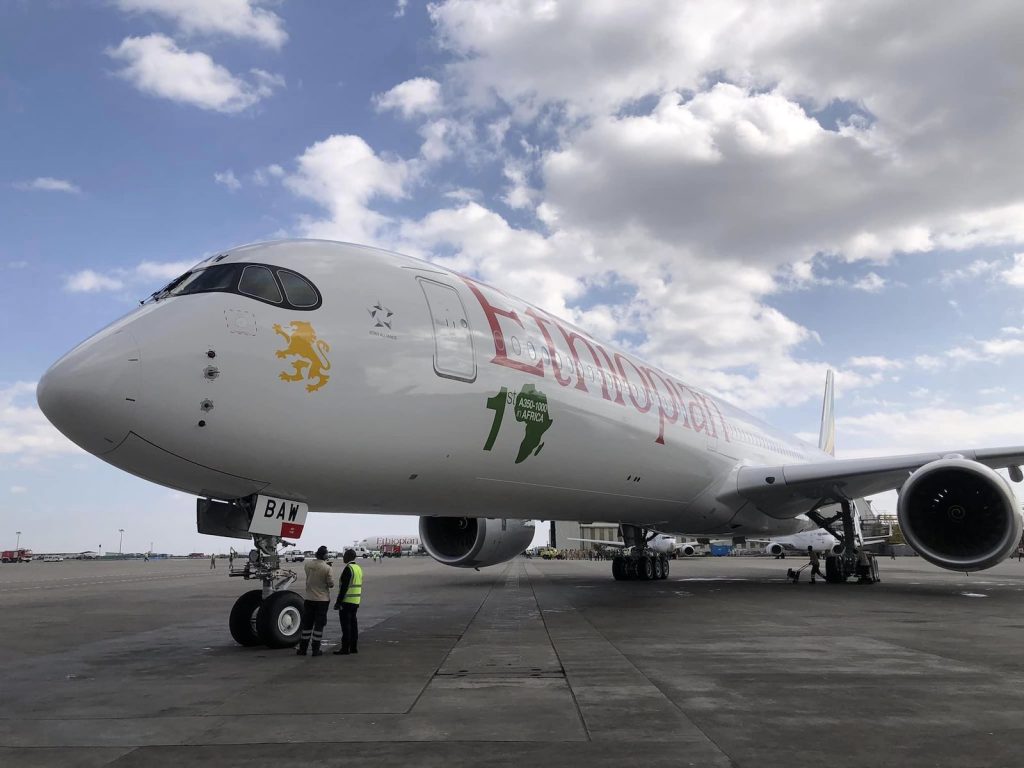
: Ethiopian Airlines acquires Africa’s first Airbus A350-1000, enhancing passenger capacity and premium service on key international routes.
Ethiopian Airlines, the largest Airbus operator in Africa, has taken delivery of the continent’s first Airbus A350-1000, the first of four set to join its fleet.
The aircraft, handed over at Airbus’s facility in Toulouse, France, on November 6 marks a major milestone for Ethiopian Airlines and the African aviation industry, showcasing the airline’s commitment to operational excellence, passenger experience, and sustainability.
This A350-1000 delivery adds to Ethiopian Airlines’ existing fleet of 21 A350 aircraft, positioning it to strengthen service on high-demand routes such as Washington D.C., London, Paris, and Frankfurt.
The acquisition is part of Ethiopian’s broader plan to modernise its fleet, with an additional 14 A350s — including 11 A350-900s and three more A350-1000s — scheduled to be integrated into its operations in the coming years.
“We are proud to be the first African airline to operate the A350-1000, a significant step forward in our commitment to providing a world-class travel experience,” said Mesfin Tasew, CEO of Ethiopian Airlines, at the delivery ceremony. “This aircraft will allow us to expand our premium offerings and serve key international destinations with the latest in aviation technology.”
Enhanced Passenger Experience with State-of-the-Art Features
The Airbus A350-1000 offers a capacity of 395 seats and introduces the largest business-class cabin in Ethiopian Airlines’ fleet.
This enhanced capacity not only boosts the airline’s ability to serve more passengers but also provides them with a superior flying experience.
The aircraft is equipped with Airbus’s HBCplus satcom connectivity solution, offering passengers high-speed, gate-to-gate internet connectivity — a first for the airline, making Ethiopian Airlines one of the most technologically advanced carriers on the continent.
The A350-1000 also features Airbus’s Airspace cabin, designed for an exceptionally quiet flight with a 50% reduction in noise compared to previous-generation aircraft.
This cabin includes advanced air conditioning, mood lighting to reduce jet lag and extra spacious seating for a more comfortable travel experience. “Our passengers will enjoy the quietest and most comfortable flights available in the skies today,” Tasew said, emphasising the aircraft’s passenger-centric design.
Operational Efficiency and Environmental Responsibility
As one of the most efficient widebody aircraft in the 300-410 seat category, the A350-1000 offers unmatched fuel efficiency and reduced carbon emissions.
With a clean-sheet design and the latest aerodynamic technologies, the A350-1000 is equipped to operate on up to 50% Sustainable Aviation Fuel (SAF). Airbus has also set a target for its aircraft to operate on 100% SAF by 2030, aligning with Ethiopian Airlines’ goal of becoming Africa’s most sustainable airline.
Esayas Woldemariam, Ethiopian Airlines’ Chief Operations Officer, highlighted the airline’s dedication to eco-friendly operations: “The A350-1000 supports our strategy for a greener future. This aircraft allows us to deliver premium service sustainably, reducing our environmental impact and supporting global initiatives toward a net-zero aviation industry.”
Seamless Integration with Existing Fleet
The A350-1000 will seamlessly integrate with Ethiopian Airlines’ A350-900 fleet, ensuring operational efficiency through commonality in pilot training, maintenance, and crew management.
This shared platform reduces training and maintenance costs while allowing the airline to expand capacity efficiently.
By leveraging fleet commonality, Ethiopian Airlines aims to improve its operational reliability and reduce turnaround times on long-haul routes.
“The operational commonality between the A350-900 and A350-1000 allows us to better serve our routes and maintain flexibility in our scheduling, which is essential in today’s competitive market,” Tasew remarked.
Expanding Africa’s Global Reach
Ethiopian Airlines has expanded its network to over 130 international destinations and is now Africa’s largest airline by revenue and fleet size.
The acquisition of the A350-1000 reinforces its mission to connect Africa to the world, positioning it as a leader in both service quality and sustainable aviation.
The A350-1000’s long-range capabilities make it ideal for Ethiopian Airlines’ busiest and farthest routes, enhancing connectivity between Africa and key global hubs.
This commitment to international growth aligns with Ethiopia’s goal of building a stronger African aviation presence in the global arena.
“By bridging Africa with the world through cutting-edge aircraft, we are fulfilling our vision of providing exceptional connectivity and building an African brand recognized worldwide,” Tasew said.
Future Outlook
Ethiopian Airlines’ fleet modernisation strategy, anchored by the A350-1000, reflects a proactive approach to meet the rising demand for air travel while addressing environmental responsibilities.
As the airline continues to integrate additional A350 aircraft, its influence on African aviation will likely grow, reinforcing its position as the continent’s most advanced and sustainable carrier.
With the delivery of the A350-1000, Ethiopian Airlines is charting a new course in African aviation — one that blends operational excellence with a focus on passenger experience and environmental stewardship. As this new model takes to the skies, Ethiopian Airlines sets a high standard for future growth and progress in Africa’s aviation sector.
Business & Money
Ethiopia Attracts $53.5 Million in Q1 Investments, Creates 8,700 Jobs
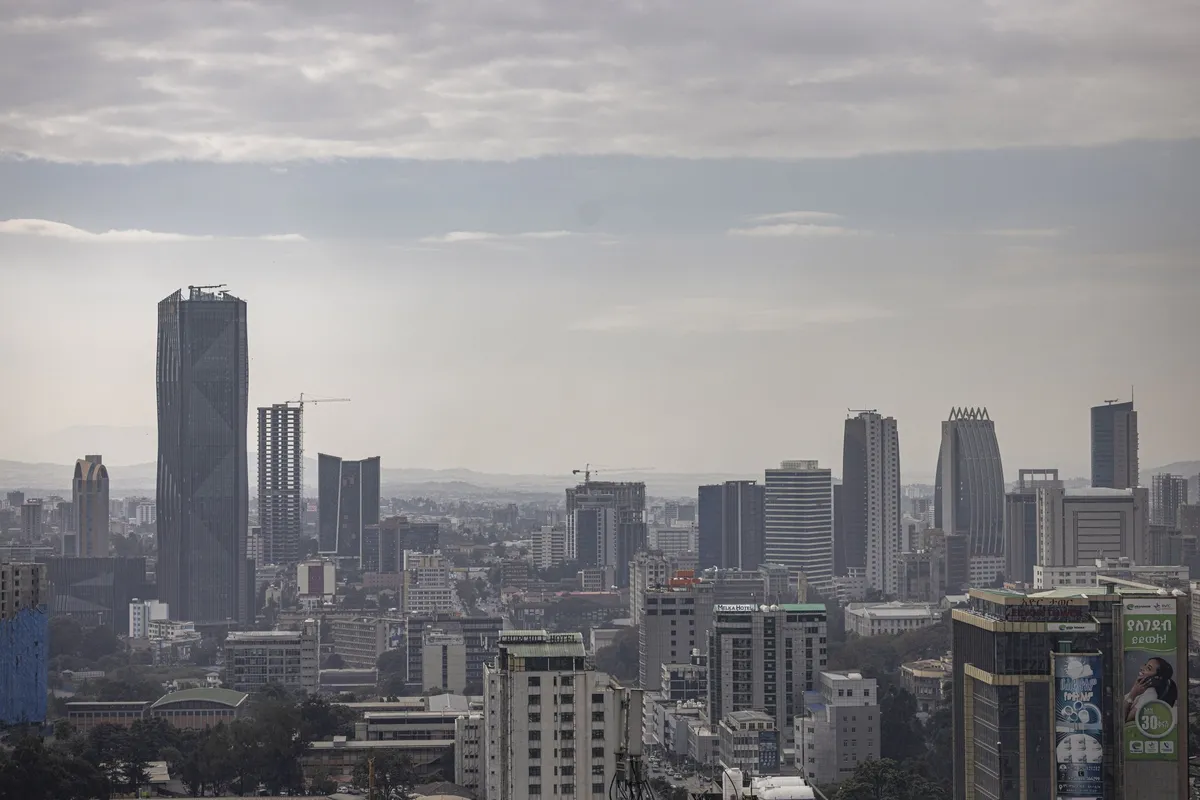
: Ethiopia attracts $53.5M in Q1 investments, creating 8,700 jobs. Growth driven
by reforms, with a focus on service and manufacturing sectors.
The Addis Ababa Investment Commission (AAIC) announced a promising start to the
2023/24 fiscal year, with 612 investors registering a combined capital of Birr 2.93 billion
($53.5 million) in the first quarter.
This reflects a 13% growth compared to the same period last year, signalling sustained
investor confidence despite economic challenges.
Speaking at a press briefing on November 30, AAIC’s Director of Communication,
Meseret Woldemariam, credited the growth to policy reforms and enhanced investor
facilitation.
“Our efforts to streamline investment processes and resolve bottlenecks are yielding
results. We remain committed to ensuring investors thrive in Addis Ababa,” she said.
SECTORIAL CONTRIBUTIONS
The majority of the newly licensed investors are in the service and manufacturing
sectors. The service sector includes hotels, tourism, and IT ventures, while the manufacturing
investments span electrical products, steel, wood, and textiles.
These investments have generated 8,707 jobs, comprising 770 permanent and 490
temporary positions created by newly licensed entities.
The AAIC has also initiated field monitoring visits to ensure operational readiness. “Our
team works closely with new investors to address challenges promptly, enabling faster
project rollout,” Meseret added.
CHALLENGES AND REFORMS
Investors continue to face hurdles such as foreign currency shortages and workspace
availability. However, the commission highlighted progress due to macroeconomic reforms,
particularly improving foreign currency access.
“We are actively collaborating with the Mayor’s office to address workspace issues
through professional support in rental solutions and operational guidance,” Meseret
explained.
Recent reforms in the National Bank of Ethiopia’s foreign exchange policy have also
been pivotal. In October, the central bank announced a 30% increase in forex allocation to priority sectors, a move welcomed by stakeholders.
EXPANSION PLANS AND PROJECTIONS
The AAIC aims to capitalise on the momentum, targeting Birr 15 billion ($274 million) in
investments by the end of the fiscal year. A new digital investment portal, launched in November, promises to reduce registration times by 40% and improve transparency.
“We are confident these initiatives will not only attract more investors but also deepen
the trust of existing ones,” Meseret concluded.
INVESTOR SENTIMENT
Prominent business leader Ahmed Yusuf, who recently launched a $3 million IT hub in
Addis Ababa, praised the commission’s efforts.
“The improvements in investor services and forex allocation are encouraging. We hope
to see more streamlined processes for licensing and operations,” he remarked.
As Ethiopia seeks to position itself as a regional investment hub, sustained efforts in
addressing investor concerns and enhancing infrastructure will be critical.
Business & Money
Ethiopia Eyes December Debt Restructuring After IMF Review
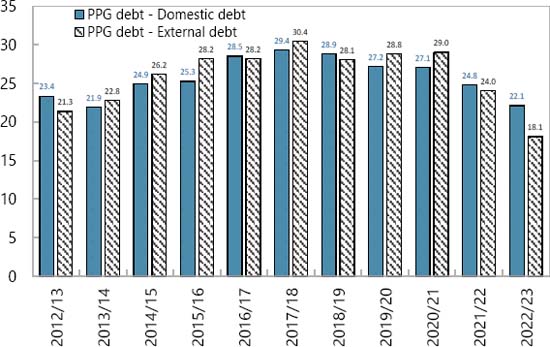
: Ethiopia’s December IMF review may unlock long-awaited debt restructuring,
crucial for economic reforms and stalled projects like the Koysha Hydroelectric
Dam.
Ethiopia’s much-anticipated debt restructuring prospects could gain clarity this
December, as the country awaits the second review under its four-year International
Monetary Fund (IMF) program.
The Extended Credit Facility (ECF), launched in August 2023, remains central to
Ethiopia’s economic reform and debt relief efforts.
Progress Toward Debt Treatment
Last week, Ethiopian authorities reached a staff-level agreement with the IMF tied to the
second review. A comprehensive report on this review is set for release in December, a month many stakeholders, including the National Bank of Ethiopia (NBE), view as pivotal for
advancing debt treatment plans.
“Debt restructuring stands at the centre of our reform agenda. With the report’s release,
we expect rescheduling talks to gain momentum,” said Habtamu Workneh, Director of
External Economic Analysis & International Relations at the NBE.
He added that discussions are focusing primarily on extending maturity dates for Ethiopia’s debts.
IMF Support and Engagements with Creditors
The IMF has provided Ethiopia with USD 2.5 billion under its current fiscal program,
offering critical support to the country’s macroeconomic stabilisation efforts.
In parallel, Ethiopian authorities have engaged with Eurobond holders and the Official
Creditors Committee (OCC).
A debt restructuring proposal was submitted to Eurobond holders in July 2024, following
key discussions in December 2023 and May 2024.
Additionally, a global investor update held on October 1, 2024, highlighted the nation’s
ongoing economic challenges and progress in creditor negotiations.
Shifting Debt Landscape
The government has reported improvements in its debt profile. Planning and Development Minister Fitsum Assefa (PhD) announced that Ethiopia had ceased relying on commercial loans and direct borrowing from the central bank.
She noted a significant drop in the external debt-to-GDP ratio to 13.7 per cent, though
the IMF’s Debt Sustainability Analysis, published in July 2024, pegged the ratio at 18
per cent as of June 2023.
External debt accounts for 45 per cent of Ethiopia’s total public and publicly guaranteed
debt, the report stated.
Financing Challenges Persist
Despite these reforms, Ethiopia’s financing challenges remain acute.
The government is seeking nearly USD 1 billion to complete the Koysha Hydroelectric
Dam project, which has stalled at two-thirds completion due to funding shortfalls.
The project is a critical component of Ethiopia’s development strategy, but its delays
underscore the broader fiscal pressures the country faces.
Expert Views on Economic Outlook
While Ethiopian officials are optimistic about the December review as a turning point,
analysts caution that real progress hinges on creditor consensus and the government’s
ability to implement reforms.
Critics have also raised concerns about inflated GDP growth figures, which they argue
may distort Ethiopia’s true debt sustainability.
Looking Ahead
The IMF review, coupled with Ethiopia’s active engagement with creditors, could mark a
a significant step forward in its quest for debt relief.
December will likely be a defining month for the country’s economic future, with broader
implications for its ability to attract investment and complete critical infrastructure
projects.
Business & Money
KCB Group Surpasses Equity with US$ 342.31 Million Nine-Month Profit
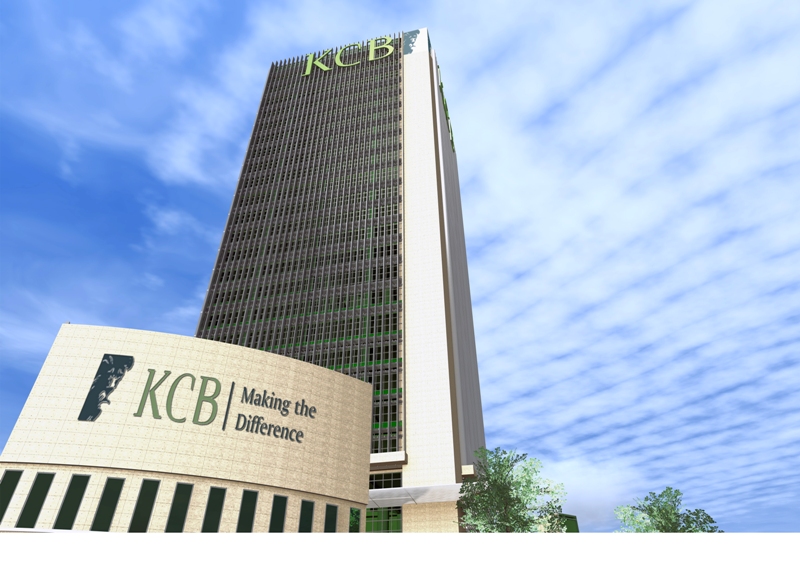
: KCB Group reports Sh44.5B ( US$ 342.31) nine-month profit, outpacing
Equity Bank. Learn about its 49% growth, challenges, and stock performance this
year.
KCB Group Plc has outperformed Equity Bank to cement its position as Kenya’s leading
lender, posting a net profit of Sh44.5 billion for the nine months ending September
This represents a 49% year-on-year growth, surpassing Equity Bank’s Sh37.5
billion profit during the same period.
Profit Growth Driven by Core Business Performance
The remarkable profit growth was fueled by higher earnings from both interest and non-
interest income streams. KCB’s diverse revenue base has been pivotal in maintaining
its dominance in the competitive banking sector.
Non-Performing Loans a Key Concern
Despite the impressive profit growth, KCB’s non-performing loan (NPL) ratio rose to
18.5%, compared to 16.5% last year. This increase highlights persistent challenges in
managing credit risk, with Chief Financial Officer Lawrence Kimathi acknowledging it as
a “pain point” for the bank.
KCB Stock Outshines Peers on NSE
KCB’s strong financial performance has translated into exceptional stock market results.
The bank’s stock has risen 78.8% year-to-date, making it the best-performing banking
stock on the Nairobi Securities Exchange (NSE).
Plans to Sell National Bank of Kenya
Earlier this year, KCB announced plans to sell its struggling subsidiary, National Bank of
Kenya (NBK), to Nigeria’s Access Bank. While Nigerian regulators have approved the
deal, it is still awaiting clearance from Kenya’s Central Bank. The sale aims to
streamline KCB’s operations and address losses at NBK.
CEO Paul Russo Optimistic About Year-End Performance
“The journey has not been without its hurdles, but our ability to walk alongside our
customers has driven our success,” said KCB CEO Paul Russo. He expressed
confidence in closing the year on a high note, leveraging improving economic conditions
across the region.
Key Figures at a Glance
● Net Profit: Sh44.5 billion (+49%)
● Non-Performing Loan Ratio: 18.5% (up from 16.5%)
● Stock Performance: +78.8% year-to-date
KCB’s strong performance underscores its resilience in navigating challenges and its
commitment to sustaining growth in Kenya’s banking sector.
-
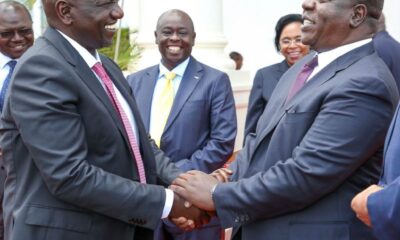
 Politics5 months ago
Politics5 months agoFred Okengo Matiang’i vs. President William Ruto: A 2027 Election Showdown
-

 Business & Money10 months ago
Business & Money10 months agoEquity Group Announces Kshs 15.1 Billion Dividend Amid Strong Performance
-

 Politics4 months ago
Politics4 months agoIchung’wah Faces Mt. Kenya Backlash Over Gachagua Impeachment Support
-
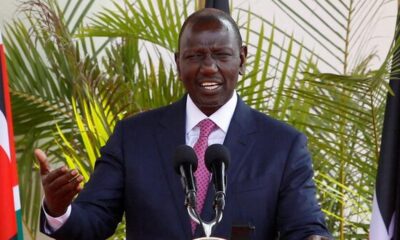
 Politics7 months ago
Politics7 months agoPresident Ruto’s Bold Cabinet Dismissal Sparks Hope for Change
-
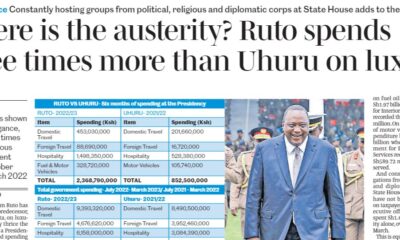
 Politics7 months ago
Politics7 months agoPresident Ruto’s Lavish Spending Amid Kenya’s Economic Struggles Sparks Outrage
-

 Politics6 months ago
Politics6 months agoJohn Mbadi Takes Over Kenya’s Treasury: Challenges Ahead
-

 Business & Money3 months ago
Business & Money3 months agoMeet Kariuki Ngari: Standard Chartered Bank’s new CEO of Africa. What’s Next?
-

 Politics7 months ago
Politics7 months agoKenya Grapples with Investor Confidence Crisis Amid Tax Protest Fallout





